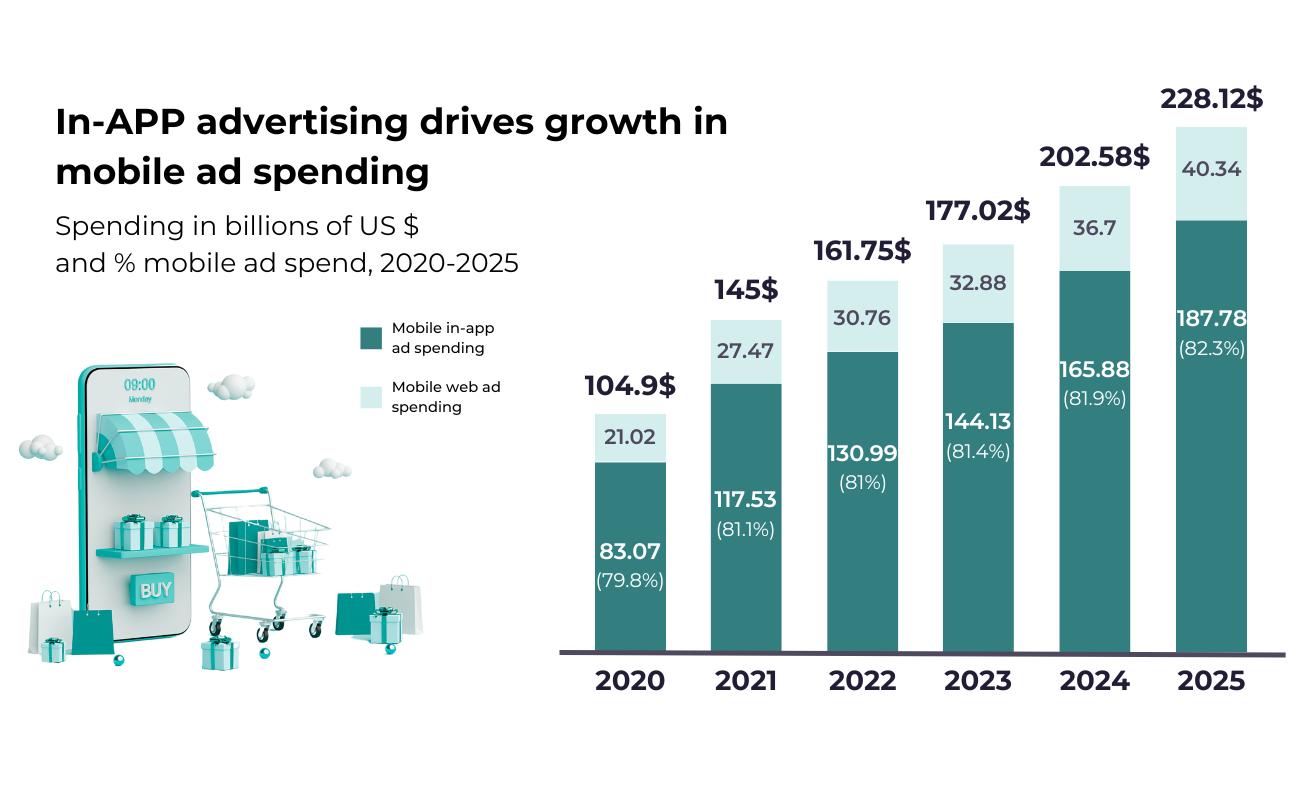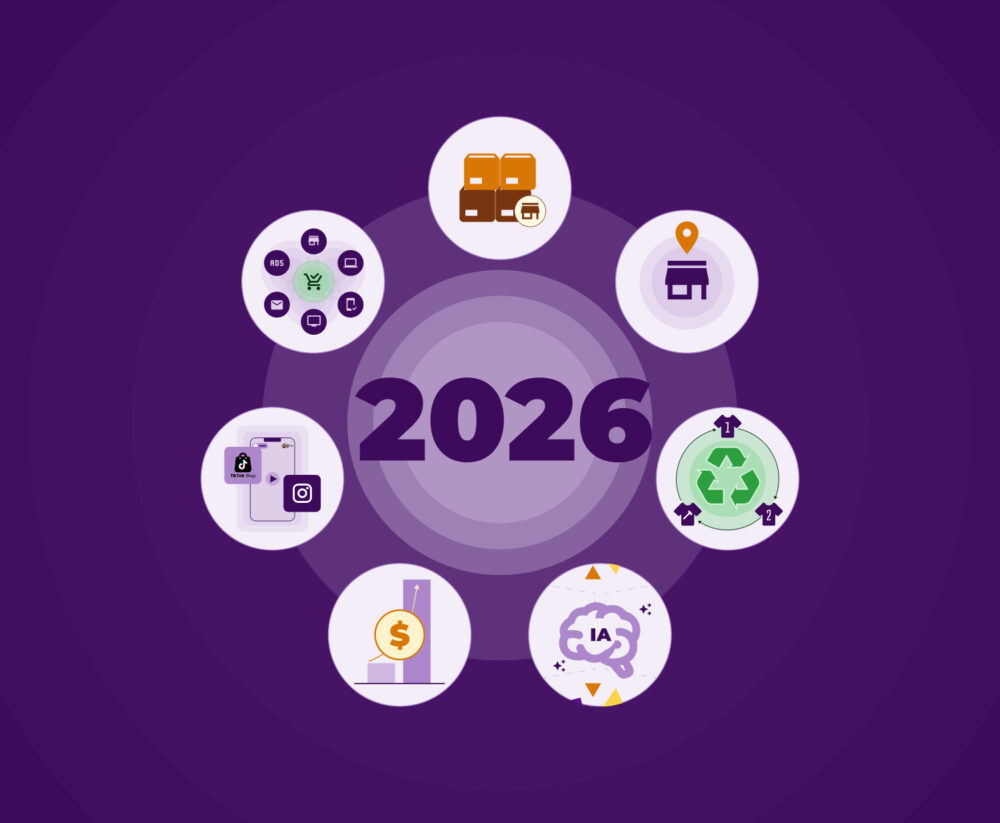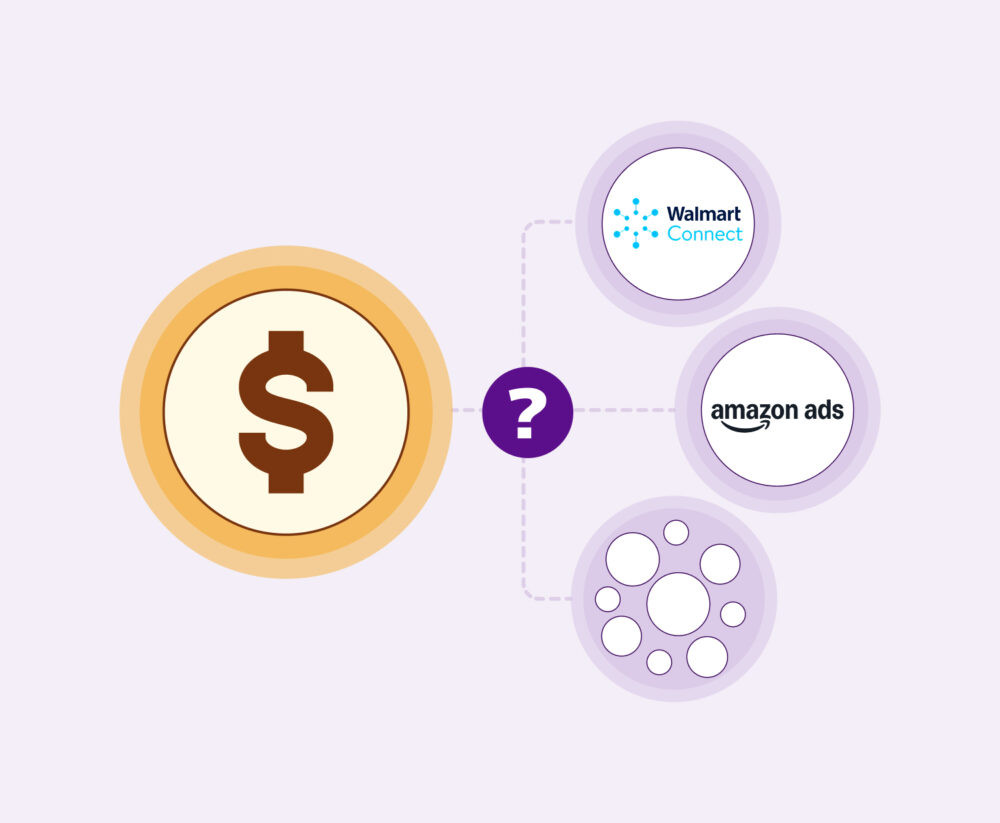The Power of Mobile Apps in the Retail Industry
Taking into account the prediction made by Statista, the global number of mobile phone users is expected to reach 7.41 billion in 2024. This would mean that around 90% of the world’s population would own a smartphone. This figure alone should be reason enough for us to understand the power that mobile apps have in any industry or sector. But there’s more.
As a result of mobile phone use, of the total digital advertising expenditure worldwide, 60% is invested in mobile app advertising. And again, according to Statista, in 2024, advertising spending on mobile will reach $413 billion.
This revolution in digital mobile advertising is transforming the way brands connect with consumers, blurring the lines between online and offline shopping experiences. In this article, we will discover the powerful reasons that make mobile apps the spearhead of advertising in the Retail industry. And all the advantages that come with using them. But first, let’s start with the basics.
What is m-commerce or mobile commerce?
Mobile commerce, also known as m-commerce, is an evolution of e-commerce that allows users to carry out commercial transactions through mobile devices such as smartphones and tablets. This mode of commerce has become popular thanks to the proliferation of these devices and the ever-increasing access to the internet. M-commerce is not limited to online purchases, but also includes the use of apps to manage payments, make reservations, and access exclusive offers, among other functionalities.
In a world where connectivity and immediacy are key, m-commerce offers consumers a convenient and fast way to interact with brands. Mobile apps have become an essential tool for improving the user experience, making it easier to navigate, search for products and make purchases from anywhere and at any time. Furthermore, m-commerce allows businesses to collect valuable data on consumer behaviour, making it easier to personalise offers and optimise marketing strategies.

Note: includes advertising that appears on mobile phones and tablets, in every type of format.
Source: Insider Intelligence | eMarketer, January 2024
Retail Media and the opportunities to monetise it on mobile
Retail Media refers to the practice of using Retail platforms as a channel for digital advertising. This can include ads on websites, mobile apps, and other digital spaces controlled by retailers.
Monetising these spaces through mobile devices presents several opportunities:
1. In-app ads
Mobile apps from retailers can integrate ads for relevant products, special offers and personalised promotions. This not only generates additional revenue, but also improves the shopping experience by providing useful and timely information at a time when the buyer is very close to completing the purchase transaction.
2. Behavioural data
Apps can collect valuable data on user behaviour, such as product preferences, purchase history and browsing patterns. This data can be used to create more effective and targeted advertising campaigns.
3. Exclusive offers and loyalty programmes
Through apps, retailers can offer exclusive promotions and loyalty programmes that encourage users to make more purchases. These actions increase sales, and also improve customer loyalty.
4. Geolocation
Geolocation technology allows retailers to send offers and promotions based on the user’s location. This can attract customers to nearby physical stores or to take advantage of online offers when they are in specific areas.
5. Social Commerce
Integrating social media functions within mobile apps allows users to share products and offers with their networks, amplifying the reach of advertising campaigns and generating additional sales.
What are the benefits of an app for any Retail business?
Accessibility
Mobile apps offer customers immediate access to a retailer’s products and services from anywhere and at any time. This is especially important in an era where convenience is key to customer satisfaction. Apps allow users to browse, search and buy products without the limitations of time or location that physical stores present.
Analytics
Apps provide a wealth of data on user behaviour. From usage frequency to product preferences and purchase history, these metrics allow brands and retailers to make informed decisions about inventory, marketing campaigns and improving the user experience.
Business open 24/7
A mobile app allows a Retail business to be “open” 24 hours a day, 7 days a week. This not only increases sales potential, but also improves customer satisfaction by providing a shopping platform that adapts to their schedules and needs. Constant availability is a significant competitive advantage in today’s market.
Smooth and hassle-free interface
Apps are designed to be intuitive and easy to use, which significantly improves the shopping experience. A well-designed interface allows users to browse products, read reviews, compare prices and make purchases with ease.
Another thing they allow, which we know many consumers use, is to browse the products they are interested in to review the information while they are physically in the store. According to a Google statistic, 70% of smartphone users who purchased a product in a physical store had just consulted information about that product on their mobile phone.
One-click purchases
One of the biggest advantages of mobile apps is the ability to make one-click purchases. This functionality simplifies the purchase process, reducing the time and effort required to complete a transaction. Fast payment options and integration with mobile payment services such as Apple Pay and Google Wallet can further improve the convenience and security of online purchases.
Next steps – How the Retail industry can take advantage of mobile apps
For the Retail industry to take full advantage of the power of mobile applications, the following steps should be considered:
Developing quality apps
Investing in the development of high-quality mobile apps that offer a superior user experience. This includes an intuitive design, fast loading times and advanced functionalities such as voice search.
Integrating emerging technologies
Adopting emerging technologies such as artificial intelligence and machine learning to further personalise the user experience. These technologies can help predict customer preferences and offer personalised recommendations.
Omni-channel marketing strategies
Implementing omni-channel marketing strategies that integrate the mobile experience with other sales channels, such as physical stores and e-commerce platforms. This ensures a consistent and seamless shopping experience for customers.
Security and privacy
Ensuring that mobile apps meet the highest standards of security and privacy to protect user data. Customer trust is crucial to the long-term success of any Retail app.
Continuous updating
Keeping apps up to date with new features and improvements based on user feedback and market trends. Constant innovation is key to staying competitive in the dynamic Retail environment.
We also want to include that one of the most far-reaching ways in which a brand can fully harness the power of mobile applications in Retail is to analyse the performance of its retail media campaigns.. Using a Retail Media Monitoring tool, such as the one offered by flipflow in its market analytics platform, will be crucial for making data-driven decisions that lead to business growth and success.
In conclusion, given that up to 90% of the world’s population now owns a smartphone, mobile apps are a powerful tool for the Retail industry.
With proper planning and execution, brands and retailers can take full advantage of their benefits and position themselves for success in an increasingly digital and interconnected future.



